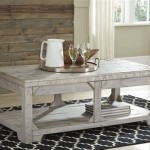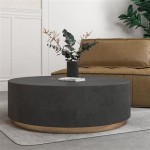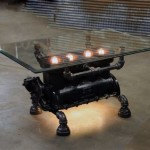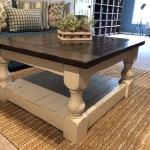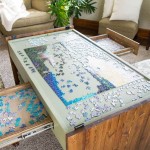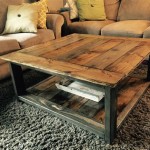How Tall Should A Side Table Be Next To A Chair?
Selecting the appropriate height for a side table placed next to a chair significantly impacts both the functionality and aesthetics of a living space. An improperly sized side table can disrupt the flow of a room, make it difficult to use, and detract from the overall design. The ideal height is dependent on several factors, including the height of the chair's armrests or seat, the intended use of the table, and personal preferences regarding comfort and convenience.
The primary goal in selecting a side table height is to ensure ease of access and usability. The table should be positioned at a height that allows individuals to comfortably reach items placed upon it without excessive stretching or bending. This consideration is crucial for creating a relaxing and functional environment.
Matching Side Table Height to Chair Armrests
One of the most common guidelines for determining side table height is to align it with the armrests of the adjacent chair. Ideally, the tabletop should be at the same height as the armrest or sit slightly lower. This positioning enables individuals seated in the chair to easily place and retrieve items, such as beverages, books, or remote controls, without awkward movements. When the table is level with the armrest, it functionally extends the surface area of the chair, creating a seamless and unified impression.
If the chair lacks armrests, the height of the seat becomes the primary reference point. In this case, the side table should be slightly taller than the seat height. A difference of a few inches is generally sufficient to allow for comfortable access. This configuration ensures that items on the table are within easy reach without requiring the user to lean down too far.
It is important to consider the style of the chair when determining the ideal side table height. Modern chairs often have lower profiles than traditional chairs, which may necessitate a lower side table. Conversely, wingback chairs or chairs with high armrests may require a taller side table. Careful consideration of the chair's dimensions is essential for achieving a harmonious and functional arrangement.
The typical height range for side tables designed to accompany chairs is between 22 and 30 inches. This range accommodates a variety of chair styles and provides a comfortable height for most individuals. However, exceptions may exist depending on the specific furniture being used.
To ensure accurate measurements, it is recommended to measure the height of the chair's armrest or seat while the chair is in its normal resting position on the floor. Using a measuring tape, determine the distance from the floor to the top of the armrest or seat cushion. This measurement will serve as the target height for the side table.
In cases where multiple chairs with varying heights are placed near a single side table, it is generally best to select a table height that accommodates the tallest chair. This approach ensures that the table is accessible to all users, regardless of which chair they are occupying. Alternatively, consider using multiple side tables of different heights to accommodate the varying needs of each chair.
Considering the Intended Use of the Side Table
Beyond the height of the chair, the intended use of the side table plays a significant role in determining its ideal height. A side table designed primarily for holding drinks or snacks requires a different height than a table intended for reading or writing. The expected contents of the table influence the ergonomics of its use.
If the side table is intended to serve as a surface for reading or writing, a slightly taller height may be preferable. A table that is too low can cause the user to hunch over, leading to discomfort and strain. A taller table allows for a more upright posture, promoting better ergonomics and reducing the risk of back pain.
For tasks such as using a laptop or writing, a side table height of 28 to 30 inches is often recommended. This height provides adequate space for placing the laptop or writing materials while maintaining a comfortable posture. Adjustable side tables are available, which allow users to customize the height to suit their specific needs and preferences.
If the primary purpose of the side table is to hold decorative items, such as lamps or vases, the height may be less critical. In this case, the focus shifts to the aesthetic impact of the table and its ability to complement the surrounding décor. The height should be considered in relation to the size and scale of the decorative items being displayed. A taller table may be necessary to showcase taller items, while a shorter table may be more suitable for smaller items.
When a lamp is placed on the side table, the combined height of the table and lamp should be considered. The goal is to ensure that the lamp's light source is positioned at a comfortable height for reading or other tasks. Poorly positioned lamps can cause glare or shadows, making it difficult to see properly. Aim for a total height (table + lamp) that positions the bottom of the lampshade at eye level when seated in the chair.
The proximity of electrical outlets should also be considered when selecting a side table for a lamp or electronic device. Ensure that the side table is positioned close enough to an outlet to avoid the need for extension cords, which can create a tripping hazard and detract from the room's appearance. Side tables with built-in USB ports and charging stations are available, offering added convenience for charging electronic devices.
Aesthetic Considerations and Personal Preferences
While functionality is a key consideration, the aesthetic appeal of the side table and its integration with the overall room design are equally important. The style, shape, and material of the side table should complement the existing furniture and décor. Personal preferences play a significant role in determining the final selection.
The height of the side table can influence the perceived balance and harmony of the room. A table that is too tall or too short can disrupt the visual flow and create an unbalanced appearance. Select a height that feels visually pleasing and proportional to the surrounding furniture.
The shape of the side table can also affect its perceived height. A round table may appear shorter than a square or rectangular table of the same height. Consider the visual impact of the shape when making your decision.
The material of the side table can influence its perceived weight and presence in the room. A side table made of dark wood may appear heavier and more substantial than a table made of glass or metal. Consider the overall style and mood of the room when selecting the material.
Personal preferences regarding comfort and convenience should also be factored into the decision-making process. Some individuals may prefer a slightly taller side table for ease of access, while others may prefer a shorter table for a more relaxed and casual look. Ultimately, the best height is the one that feels most comfortable and functional for the user.
It can be beneficial to experiment with different side table heights before making a final purchase. Try placing books or other objects under an existing table to simulate different heights and assess their impact on comfort and usability. This simple test can help to identify the ideal height for your specific needs and preferences.
In conclusion, determining the appropriate height for a side table involves a careful consideration of multiple factors, including the height of the chair, the intended use of the table, and personal preferences. By taking these factors into account, it is possible to select a side table that is both functional and aesthetically pleasing, enhancing the overall comfort and beauty of the living space. Paying attention to these details will result in a more cohesive and user-friendly environment.

Finding The Right Height For Your Side Table Belaré Home

My Search For A Side Table Between Chairs The Diy Playbook

Dining Table Chair Height Ultimate Guide

How To Choose Coffee Tables End Consoles Ethan Allen

Accent Table Between Chairs Design Ideas

Finding The Right Height For Your Side Table Belaré Home

Accent Table Between Chairs Design Ideas

Living Room Seating Adding Cozy Chairs The Diy Playbook

How To Choose Coffee Tables End Consoles Ethan Allen

End Tables Vs Side What S The Difference
Related Posts

